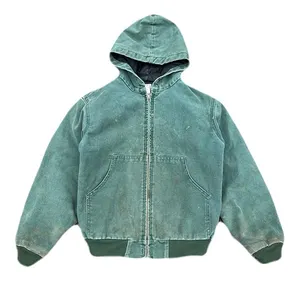Luôn dẫn đầu trò chơi thời trang với những chiếc
áo khoác vô cùng sành điệu và hợp thời trang, chỉ có trên Alibaba.com. Chúng được sản xuất bằng các loại vải cao cấp và được thiết kế bởi các chuyên gia đầu ngành để làm cho bộ sưu tập trở nên thời trang và thoải mái. Trang web cung cấp nhiều loại cho người dùng để tìm một mặt hàng phù hợp với sở thích và sở thích của họ. Người bán đáng tin cậy bán
áo khoác denim nam với giá chưa từng có. Tận dụng những ưu đãi này và gây ấn tượng với bản thân hoặc những người thân yêu.
Thêm nét thanh lịch cho diện mạo của một người với
áo khoác sang trọng và tinh tế được cung cấp trên Alibaba.com. Chúng được sản xuất từ những vật liệu tốt nhất để mang đến cho người dùng sự thoải mái tối đa và giúp họ cảm thấy thư thái và thoải mái.
áo khoác nam để bán trên trang web có nhiều biến thể và kiểu dáng khác nhau để thu hút nhiều người dùng. Chúng có nhiều kiểu dáng, kích thước và màu sắc để phục vụ cho dân số lớn hơn.
áo khoác denim nam bền và có thể chịu giặt bằng máy.
áo khoác nam để bán có các chất liệu và họa tiết khác nhau như đường viền, ren, diềm và thêu. Chúng không chỉ đẹp mà còn chắc chắn sẽ khiến người dùng ấn tượng và sành điệu. Chúng được thiết kế phù hợp với các điều kiện thời tiết khác nhau và có thể kết hợp với quần jean, váy, đầm và quần. Những chiếc áo khoác đủ dày để giữ cho người dùng ấm áp và ấm cúng trong mùa đông khắc nghiệt và có màu sắc đậm.
Hãy tự giải quyết những khó khăn khi tìm kiếm
áo khoác chất lượng cao bằng cách truy cập Alibaba.com . Chúng được bán với giá cao ngất ngưởng bởi những người bán đáng tin cậy. Áo khoác phao nam là sản phẩm bán chạy nhất mọi thời đại và có nhiều màu sắc hợp thời trang.














